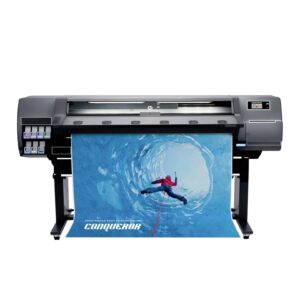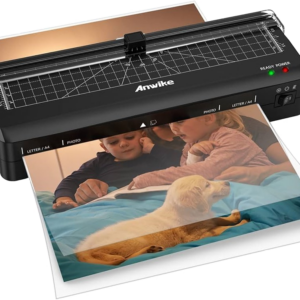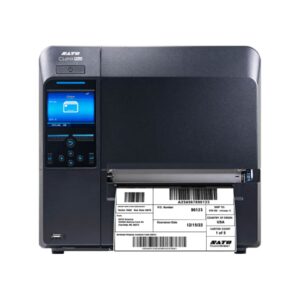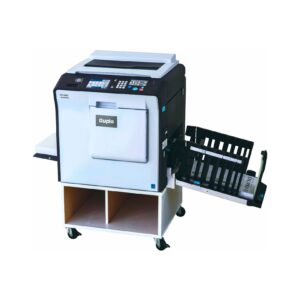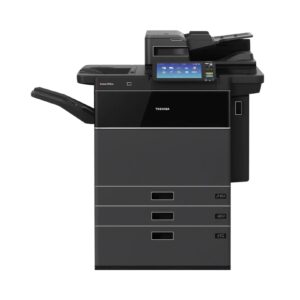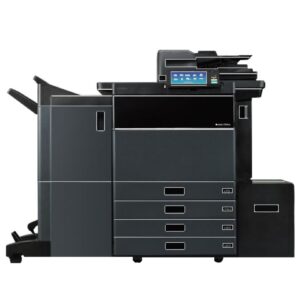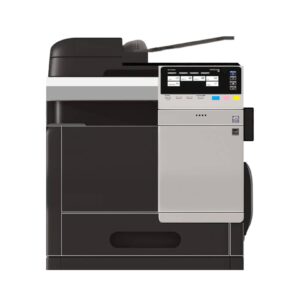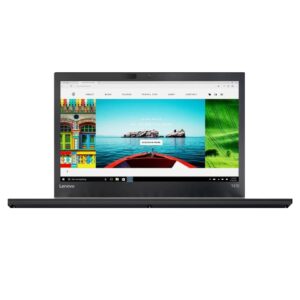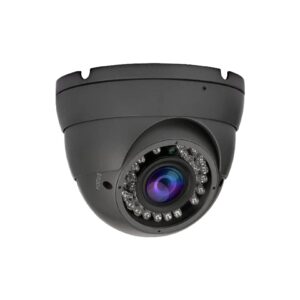Description
Label printer is an electronic device that prints on self-adhesive label sheets and label material and/or tags. Label printers are different from ordinary printers because they need to have special feed mechanisms to handle rolled stock, or tear sheet (fanfold) stock. found in companies of all sectors – especially in the industrial and service sectors. They are used in a wide range of applications, including supply chain management, logistics, warehousing, retail price marking, packaging labels, blood and laboratory specimen marking, healthcare, and fixed assets management.
Colour label printers are ideal for high-quality printing in flexible widths & lengths of durable labels, visitor passes, tickets, shelf labels, as well as GHS, food, EU energy efficiency and product labels, tags, tickets, or wristbands. labels on glossy paper, polypropylene, clear labels. and polyester labels. Top of FormBottom of Form
The printer uses advanced inkjet, thermal or laser technology to apply the design to the label. These printers then produce high-resolution, vibrant labels with precise details.
there two types of mechanisms used for printing onto labels. These are Direct Thermal and Thermal Transfer.
Direct thermal uses heat sensitive paper to print onto labels and does not use any ribbon. These labels can generally only be printed in black, unless special pre-printed paper is used, and have a maximum shelf life of a year. These are therefore most popularly used in the foods industry where fresh produce is transported quickly and stored away from heat and sunlight as the labels tend to fade over time.
Thermal transfer, being the most common printers, uses a carbon ribbon and heat to transfer ink from the ribbon to the label for permanent printing. The ribbon can be any colour so the print is not limited to black. these labels are more robust & less light sensitive & are used in cases where longevity is important such as barcodes, outdoor labels and shelf marking labels. The thermal printhead is made up of many tiny heating pins which each represent a pixel. Wax or resin-based ink is then loaded to the printer in the form of a ribbon. This ribbon is then drawn through the printer between the paper and the printhead. Signals from the computer are sent to these printhead pins to either heat or cool them which then melt the ink onto the blank label surface to create the required image.
Labelling software
This runs on a general-purpose personal computer, and is designed to create and/or format labels for printing.
Barcode printers are commonly used in warehouse and logistics management to help track inventory, shipments, and deliveries. They are also used in manufacturing and other industrial applications to maintain a track record of products and components. They have helped in providing fast and efficient ways to access and retrieve information.
Barcode Printing Process
For printing barcode labels, special barcode printers or label printers, thermal transfer and direct thermal transfer printers are used as explained above. These are often used in industries and commercial applications across various business domains. Barcode printing is done in following steps:
- Data Input: The process of barcode printing starts from the stage of receiving the data from a computer system or database, or it can be manually entered into the printers. The barcode printer receives this data to be printed in the form of a barcode.
- Barcode Generation: After receiving input data, the printer generates the barcode image using that data. It converts alphanumeric or numeric data into the form of barcodes that can be easily scanned by a barcode scanner. The printer is responsible for barcode labels that are printed accurately and with high quality. They monitor the printing process to check for errors, smudges, or misalignments that can decrease the quality and readability of the barcode.
- Label Design: The software of the printer allows the user to design the layout of the barcode labels. This includes the size, shape, and orientations to be printed alongside the barcodes, like the product name, price, or expiration date of the product.
- Material selection: Depending on the user’s requirements, the printer operates on selected label materials. This can be based on various factors like durability, adhesive quality, and desired printing quality.
- Printing Process: Barcode printers use a thermal printing process to transfer a barcode image onto label materials. Direct Thermal & Thermal transfer printing are two types of thermal printing techniques commonly used as explained above-
- 2. Industrial printers:Industrial printersare used in large-scale business and other industrial applications. They are designed for high-quantity printing applications and can handle larger label sizes and rolls.
Related Products & Services
- Barcode Printers are used to output barcode data. Industrial Printing Equipment include screen printers, pad printers and offset printers.
- Ink Jet Printers Ink jet printers project electrically charged droplets of ink onto a page.
- Kiosk and POS Printers Kiosk and POS printers are used with kiosks and point-of-sale.
Label Materials Guide
Direct Thermal Paper
Direct thermal material for short term use, very limited resistance to marking or smudging. Direct thermal labels, ideal for short life retail and logistics applications and can be used to print price markdown labels, address, product, courier & postage labels.
Direct Thermal Top Coated Paper
Offers a protective surface coat on one side ensuring the labels are more resistant to marking, are more resistant to fading in sunlight & are smudge-proof. Ideal applications include weight and food labels (butcheries, supermarkets), price marking labels.
Semi or Mid gloss Gloss Paper
This is possibly the most common thermal transfer material, being low cost, providing great print quality Ideal for environments where print needs to be longer lasting. Typical applications include product identification, work in progress, shipping labels & pharmaceuticals.
Matt Paper
The lowest cost label material, most popular types are uncoated papers suitable for high volume printing. The main disadvantage of matt uncoated paper is that it can mark easily. Ideal for labelling of packaging boxes, pallets, product identification & receiving.
Polyester
Polyester (PET) films are suited to high quality & long-lasting applications requiring resistance to heat, water, oil & chemicals. Typical applications serial number, cosmetics, appliances, electrical equipment, instruction tags on home and industrial and logistical utilities and logistics labelling.
Polyethylene (PE) films are suited to applications that require resistance to water, oil & chemicals. They conform well to package contours & flex well with squeezable packaging. Common applications include labelling test tubes, vials, chemical and more.
When we break down the different types of ribbons, you’ll see there are three distinct types:
Here is A Table Comparison for the 3 Types of Ribbons
| Type | Wax Ribbons | Wax-Resin (Hybrid) Ribbons | Resin Ribbons |
| Material | Standard paper labels | Semi-gloss paper labels and certain synthetic materials | Polyester (PET), Polypropylene (PP), Polyethylene (PE) |
| Features | Cost-effective solution for standard paper labels with good print quality. | Options providing durability for semi-gloss paper & synthetic materials. | Highest durability, ideal for synthetic materials, with resistance to harsh conditions and high-resolution printing. |
| Application | Retail, Logistics, Inventory management. | Product labeling, Healthcare, Asset tracking. | Pharmaceuticals, Chemicals, Outdoor Asset Tracking. |
| Suitable Labels | Product labels, Shipping labels, Retail tags. | Retail tags, Product labels, Inventory management. | Chemical drum labels, Outdoor Asset tags, Pharmaceutical & Industrial labels. |









